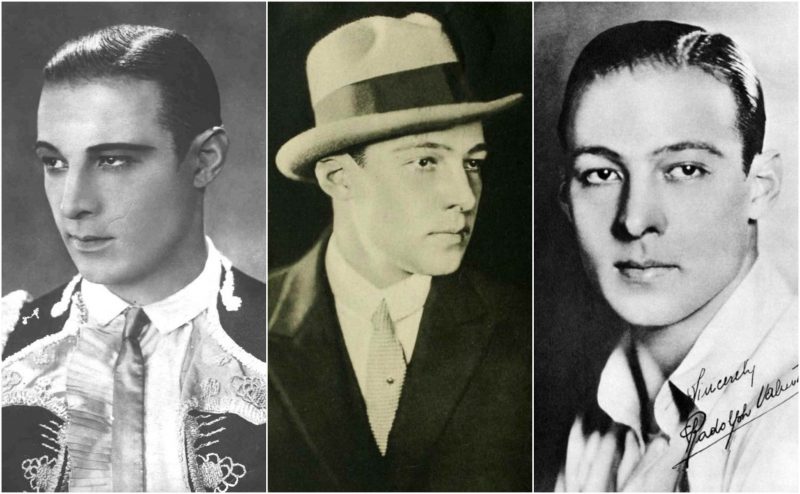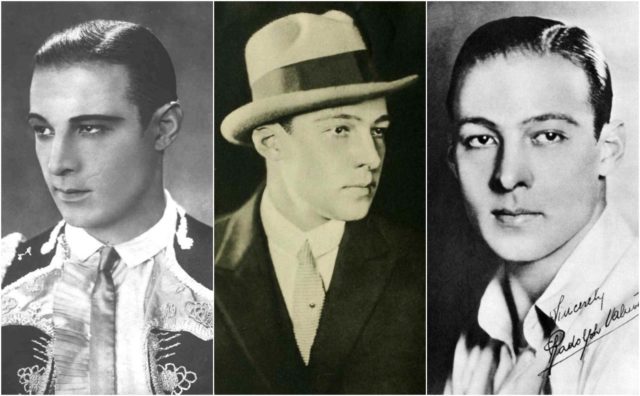
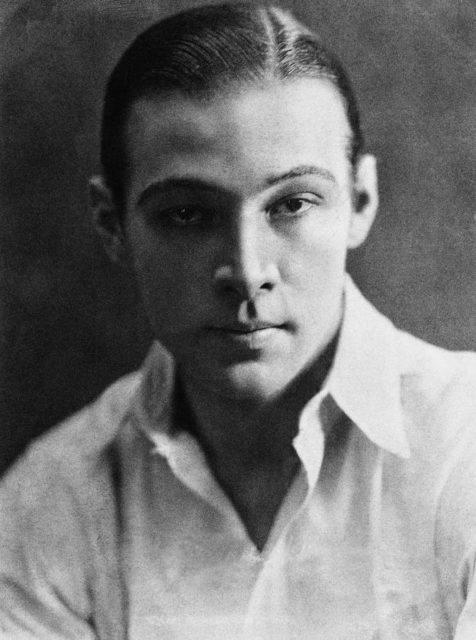
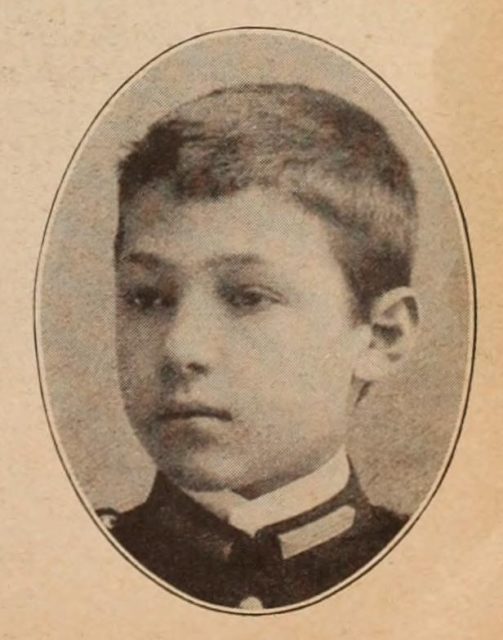
Rudolph Valentino was born Rodolfo Alfonso Raffaello Pierre Filibert Guglielmi di Valentina d’Antonguella in Castellaneta, Apulia, Kingdom of Italy.
As a child, Rodolfo was indulged because of his exceptional looks and his playful personality. His mother coddled him, while his father disapproved of him.He did poorly in school and was eventually enrolled in agricultural school at Genoa, where he earned a certificate.
After living in Paris in 1912, he soon returned to Italy. Unable to secure employment, he departed for the United States in 1913.He was processed at Ellis Island at age 18 on December 23, 1913.
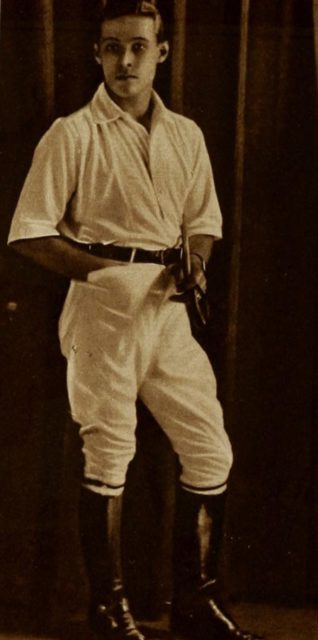
Displeased with playing “heavies,” Valentino briefly entertained the idea of returning to New York permanently. He returned for a visit in 1917, staying with friends in Greenwich Village, eventually settling in Bayside, Queens. It was there that he met Paul Ivano, who would greatly help his career.
While traveling to Palm Springs, Florida, to film Stolen Moments, Valentino read the novel The Four Horsemen of the Apocalypse by Vicente Blasco Ibáñez. Seeking out a trade paper, he discovered that Metro had bought the film rights to the story. In New York, he sought out Metro’s Office, only to find June Mathis had been trying to find him. She cast him in the role of Julio Desnoyers. For the director, Mathis had chosen Rex Ingram, with whom Valentino did not get along, leading Mathis to play the role of peacekeeper between the two
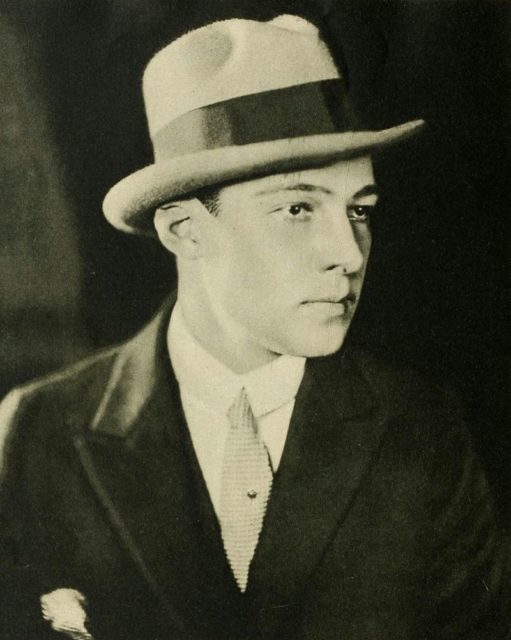
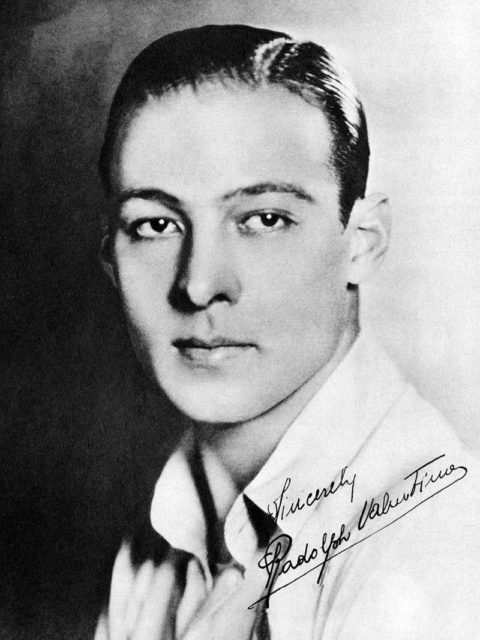
Dating back to the de Saulles trial in New York, during which his masculinity had been questioned in print, Valentino had been very sensitive about his public perception. Women loved him and thought him the epitome of romance. However, American men were less impressed, walking out of his movies in disgust. With the Fairbanks type being the epitome of manhood, Valentino was seen as a threat to the “All American” man.
One man, asked in a street interview in 1922 what he thought of Valentino, replied, “Many men desire to be another Douglas Fairbanks. But Valentino? I wonder…”Women in the same interview found Valentino “triumphantly seductive. Puts the love-making of the average husband or sweetheart into discard as tame, flat, and unimpassioned.”Men may have wanted to act like Fairbanks, but they copied Valentino’s look. A man with perfectly greased-back hair was called a “Vaselino.”
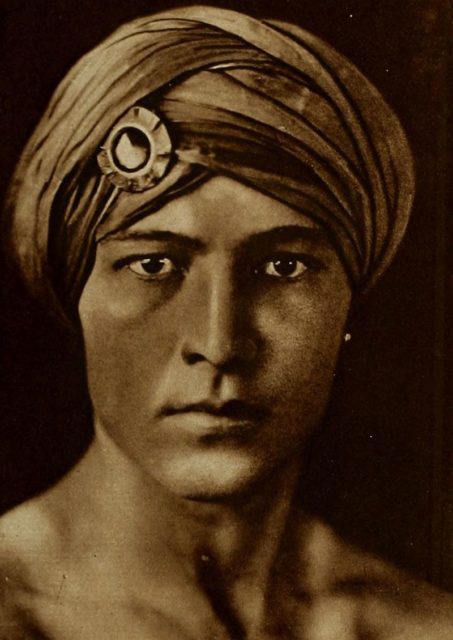
Some journalists were still calling his masculinity into question, going on at length about his pomaded hair, his dandyish clothing, his treatment of women, his views on women, and whether he waseffeminate or not. Valentino hated these stories and was known to carry the clippings of the newspaper articles around with him and criticize them.
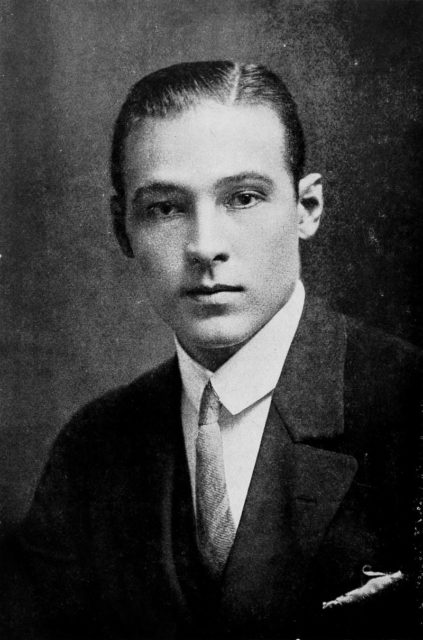
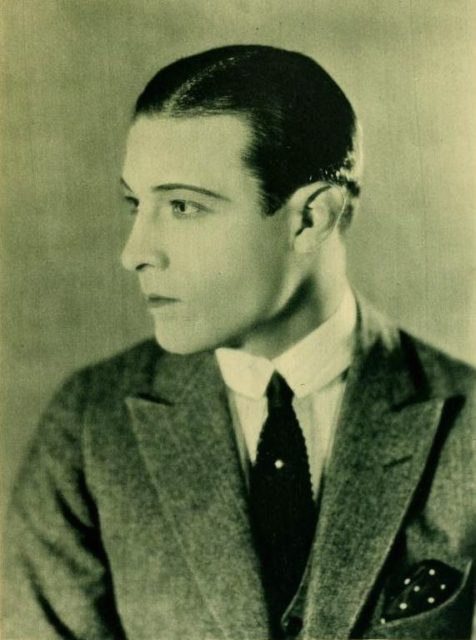
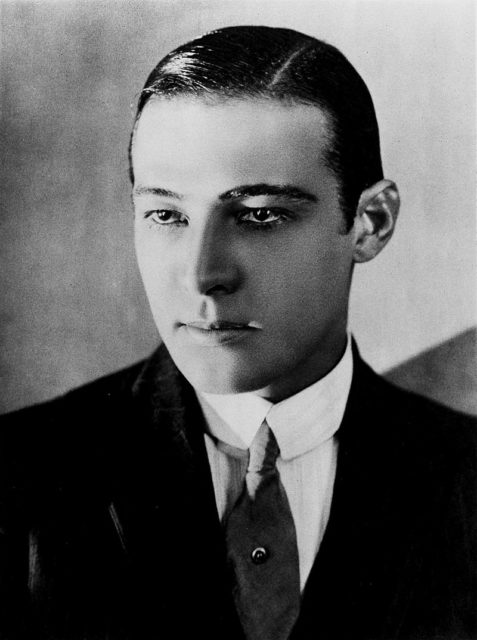
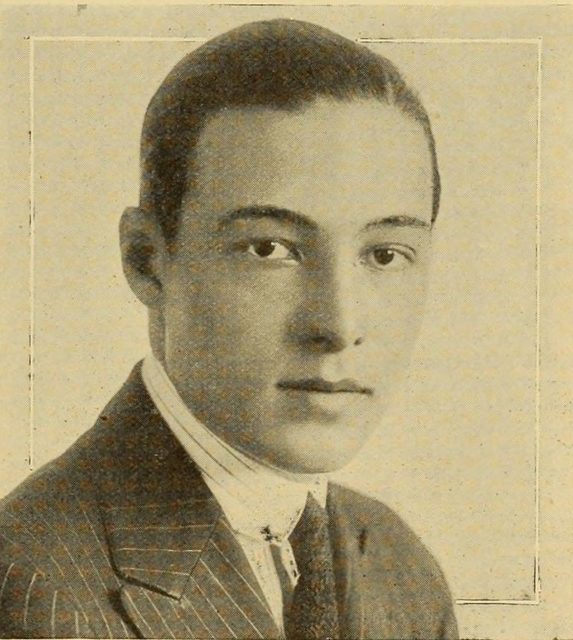
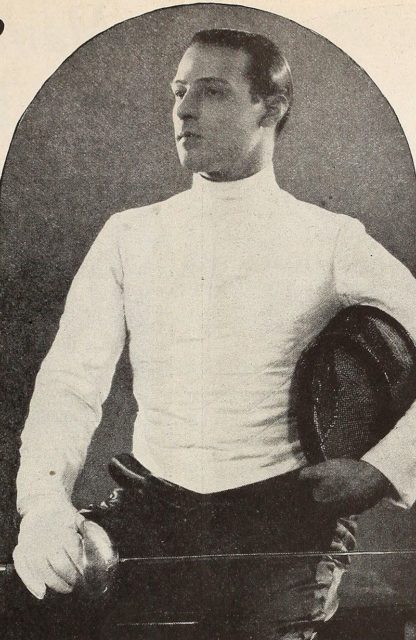
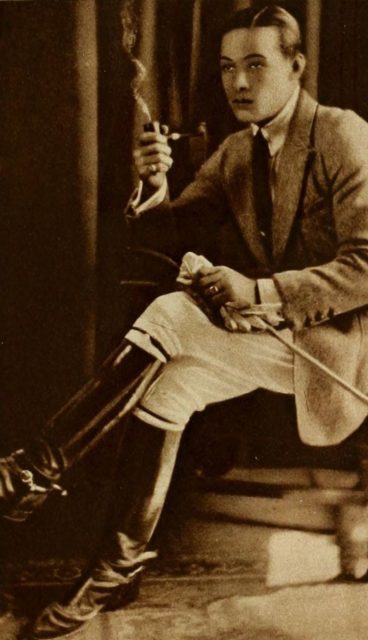
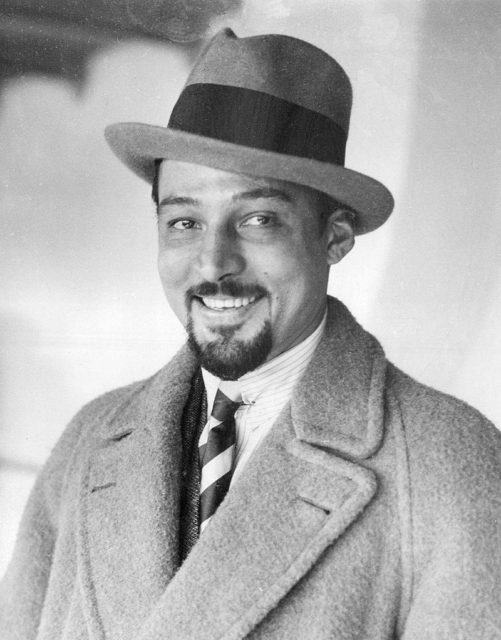
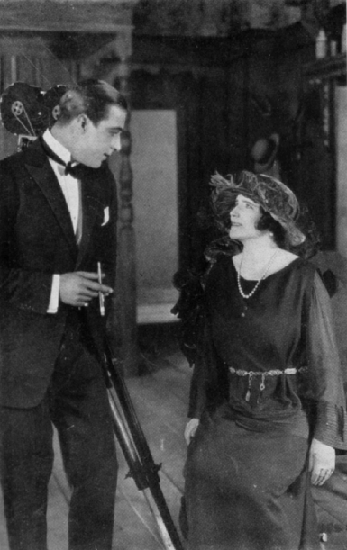
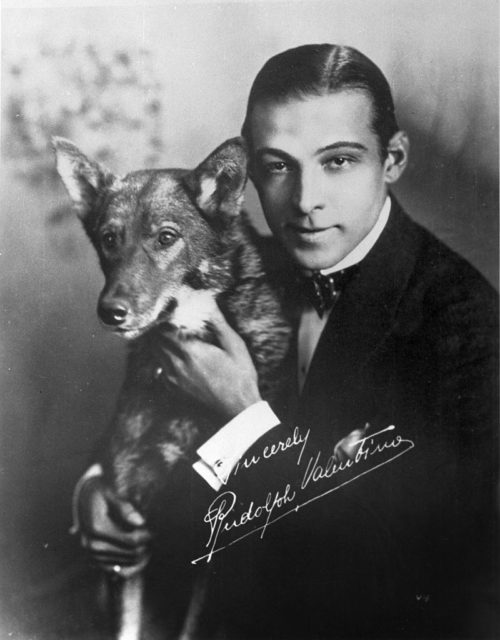
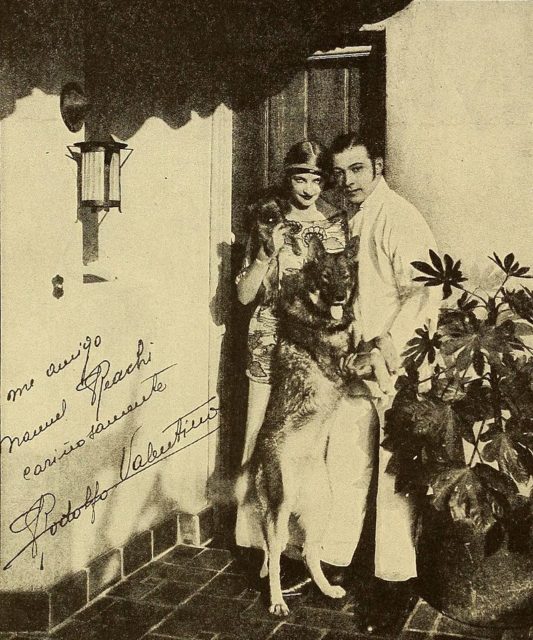
On August 15, 1926, Valentino collapsed at the Hotel Ambassador, Park Avenue, New York. He was hospitalized at the New York Polyclinic Hospital and an examination diagnosed him as suffering from appendicitis and gastric ulcers, requiring an immediate operation. (His condition is now referred to as “Valentino’s syndrome”: perforated ulcers mimicking appendicitis.) Despite surgery, Valentino developed peritonitis. On August 18, his doctors gave an optimistic prognosis and told the media that unless his condition changed for the worse, there was no need for updates.However, on August 21, his condition did change for the worse, as he was stricken with a severe pleuritis relapse that developed rapidly in his left lung due to his weakened condition.The doctors realized that he was going to die, but as was common at the time with terminal patients, decided to withhold the prognosis from the actor, who believed that his condition would pass. During the early hours of Monday, August 23, Valentino was briefly conscious and chatted with his doctors about his future. He fell back into a coma and died a few hours later, at the age of 31.
